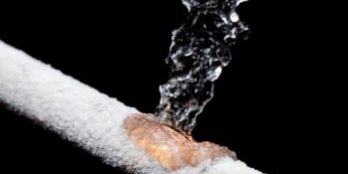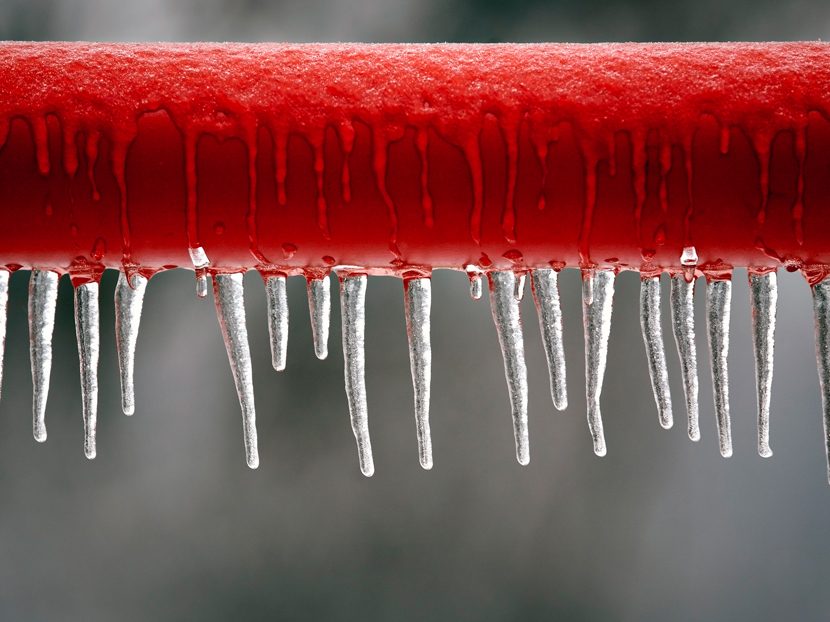Identifying a Frozen AC Pipe - Efficient Fixes for House Air Conditioning Systems
Identifying a Frozen AC Pipe - Efficient Fixes for House Air Conditioning Systems
Blog Article
Are you currently trying to find insight around How can I fix an air conditioner’s frozen pipe??

Introduction
Finding that your air conditioning pipe is iced up can be concerning, particularly throughout hot summertime when you count on your air conditioning system the most. Recognizing what to do in such a situation is vital to stop additional damages to your cooling system and guarantee your comfort inside.
Recognizing the Causes
Numerous factors can contribute to the freezing of an air conditioning pipe. Recognizing these reasons can aid you address the issue effectively.
Absence of Airflow
One typical root cause of a frozen AC pipeline is inadequate air flow. When the air movement over the evaporator coil is restricted, it can trigger the coil to go down below freezing temperature, resulting in ice formation on the pipe.
Low Refrigerant Levels
Insufficient refrigerant levels in your air conditioner system can likewise result in an icy pipeline. Low cooling agent levels can trigger the pressure in the system to drop, leading to the cold of dampness on the evaporator coil.
Cold Weather Conditions
In chillier environments, freezing temperatures outside can contribute to the freezing of a/c pipelines. If your air conditioner unit is not correctly protected or if there are leaks in the ductwork, cold air can infiltrate the system, triggering the pipe to ice up.
Dirty Air Filters
Unclean or stopped up air filters can restrict air movement in your air conditioning system, causing numerous problems, including an icy pipe. It's necessary to change or cleanse your air filters on a regular basis to make certain correct air flow and stop ice buildup.
Signs of a Frozen A/c Pipe
Acknowledging the signs of an icy air conditioner pipe is essential for punctual action.
Reduced Airflow
If you see a considerable decrease in air flow from your vents, it might indicate a frozen pipeline.
Ice Buildup on the Pipe
Visible ice accumulation on the cooling agent line or the evaporator coil is a clear indicator of an icy AC pipe.
Unusual Sounds from the Unit
Unusual sounds, such as hissing or bubbling, coming from your AC system can signal that there's ice existing on the pipeline.
Immediate Actions to Take
When faced with an icy a/c pipe, it's important to act swiftly to avoid further damage to your air conditioning system.
Shutting off the a/c
The very first step is to switch off your air conditioning system to avoid the system from running and intensifying the issue.
Checking for Blockages
Evaluate the location around the indoor unit for any kind of blockages that may be blocking air movement, such as furniture or curtains.
Thawing the Pipe
You can use gentle techniques like placing towels taken in warm water around the icy pipe to assist thaw it slowly.
Safety nets
Taking preventive measures can aid prevent future incidents of an icy a/c pipeline.
Routine Maintenance Checks
Set up normal maintenance get in touch with a specialist HVAC technician to make certain that your AC system is running successfully.
Altering Air Filters
Frequently replace or clean your air filters to prevent airflow constraints and keep optimum performance.
Protecting Exposed Pipes
If your AC pipelines are subjected to cold temperature levels, take into consideration protecting them to prevent cold during cold weather.
Seeking Professional Help
If DIY methods stop working to settle the issue or if you're unclear regarding how to continue, it's best to look for support from a qualified HVAC specialist.
When DIY Methods Fail
If your attempts to thaw the pipeline or address other issues are unsuccessful, it's time to hire a specialist.
Relevance of Hiring a Professional HVAC Technician
A qualified HVAC specialist has the proficiency and devices required to diagnose and fix issues with your air conditioner system safely and properly.
Conclusion
Taking care of a frozen air conditioning pipeline can be an aggravating experience, however recognizing just how to react can aid minimize damage and restore comfort to your home. By understanding the causes, recognizing the signs, and taking punctual activity, you can properly deal with the concern and stop future incidents.
Frozen AC Line: Why It Happens & What To Do About It
A frozen AC line can be a rather peculiar sight in a place like Phoenix, Arizona where nothing ever freezes. In this post, we’ll discuss what makes an air conditioner line frozen – and what you can do about it.
Dirty Air Filters
Did you know that you should be cleaning or replacing your air filters on a monthly basis? Failing to do this can result in airflow issues that, in turn, cause your evaporator coils and lines to freeze over. You’ll notice a buildup of ice on both components, although the buildup on your pipes will, of course, be more evident unless you open your air condition up to reveal the coils.
What To Do About It
Give your air filter a good cleaning if it’s reusable. If not, replace the filter outright. Next, switch your air conditioner’s fan setting on and leave it there for 2-3 hours. This will draw warm air in, helping to thaw your evaporator coil. You can also check out this article for some tips on cleaning the coils themselves if you’d like to speed the process up. Before you switch the unit back to its normal state, make sure the supply vents are completely unobstructed and free of dust or other debris.
If you keep having this issue even after replacing your filters regularly, contact a local HVAC repair company and have them inspect your evaporator coil, ductwork, and any other components that may be at fault. If you live in the Phoenix, Arizona area, give American Home Water and Air a call.
Low Refrigerant Levels/Leakage
What To Do About It
Contrary to what air conditioner “recharge” companies often tell their clients about refrigerant, it should never need to be simply refilled. You see, refrigerant runs in what experts refer to as a “closed loop.” Refrigerant really shouldn’t be leaving that loop. If it is, you’ve got a leak.
Paying someone to come and pump more refrigerant into your system (aka “recharge” it) isn’t the solution. Doing that will simply kick the can down the road. Besides, refrigerant leaks can be harmful to the environment and people in your home.
Rather, you need to take care of the leak with the help of a technician. Check out this article for some more information about dealing with air conditioners that are leaking refrigerant. Before you contact a technician, switch your thermostat to the off position. Then, switch the fan setting on and let it run for 2-3 hours so the unit can thaw.
Improper Temperature Setting
Improper temperature settings can also cause a drop in your air conditioner’s pressure. What many people don’t realize is that air conditioners are actually designed to run when temperatures have fallen above roughly 60 degrees Fahrenheit. If you run the unit when it’s cold outside, you’ll run into many issues, including frozen components.

I'm just very drawn to How can I fix an air conditioner’s frozen pipe? and I'm hoping you liked the new blog entry. Sharing is caring. Helping people is fun. Bless you for your time. Kindly come by our site back soon.
Source Report this page